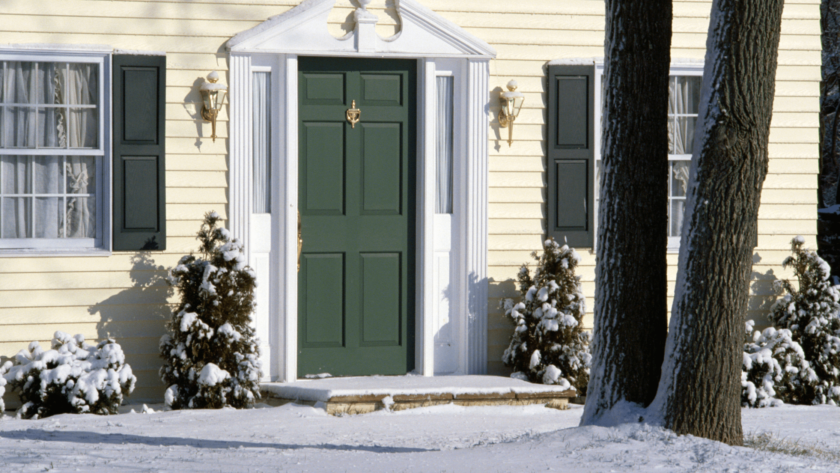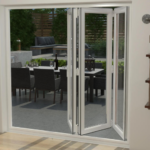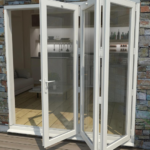Harsh winter weather can have an impact on your doors, causing common problems and issues. The good news is, many of these can be prevented or easily fixed.
We’re going to take a closer look at the problems you might experience with your doors in the cold and damp UK winter weather, as well as the things you can do to keep them in tip top condition whatever is going on outside!
Swelling & Shrinking
Wooden doors are particularly sensitive to changes in temperature and moisture, so swelling and shrinking can occur in extreme weather conditions. Here are all your top questions about how this affects your doors in the winter months.
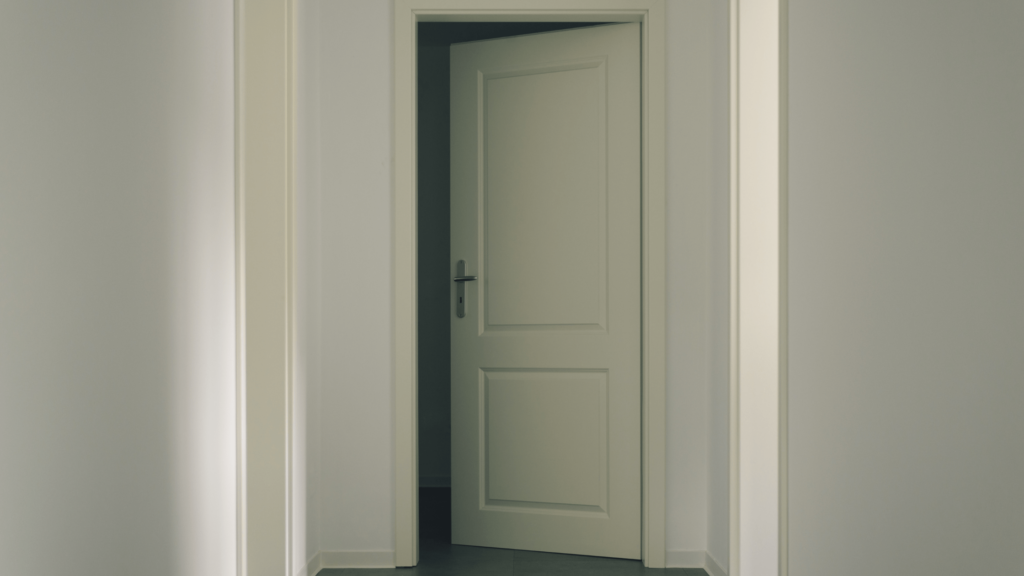
Why is my door not closing properly in the winter?
In winter, your door might not close properly due to the contraction of materials in cold temperatures, which can lead to misalignment. Wooden doors can absorb moisture and swell, which also causes problems with closing. Extreme cold can affect the door frame, hinges, and hardware, causing sticking or damage that impedes smooth operation.
In short, cold weather can make the wood expand, the frame shrink, and the metal parts stiffen—resulting in sticking issues. If the door is misaligned, the door latch misses the strike plate so it can’t shut properly. Even if you fix swelling or shrinkage, this might need adjusting to ensure the door closes properly.
How do you fix a swollen door in the winter?
To fix a swollen door in the winter, gently sand down the swollen areas until the door closes smoothly. Apply a sealant or paint to protect the wood from further moisture damage. It’s essential to address any leaks or humidity issues to prevent future swelling. Regular maintenance can help mitigate this common issue during colder months.
Will a swollen door go back to normal?
A swollen door may return to its normal size when humidity levels decrease or with a change in temperature, but extensive swelling from moisture or heat often causes permanent warping. To prevent sticking, it’s advisable to address the underlying moisture issue and consider sealing or treating the wood.
How do you stop a wooden door from swelling in the winter?
You can prevent wooden doors from swelling in winter by maintaining stable indoor humidity levels, ideally between 35-50%. Ensure proper ventilation, use a dehumidifier if necessary, and seal the wood with paint or varnish. Regularly check weather stripping for gaps and repair as needed to minimise moisture exposure and swelling.
Protect wood doors in winter by applying a protective coat of varnish or sealant that’s suitable for exterior use. This shields against moisture and temperature changes. Also, install weatherstripping around the door to prevent cold drafts, and adjust the threshold to ensure a tight seal. Regular maintenance like these steps helps safeguard wooden doors from harsh winter conditions.
Will wooden doors warp in the cold?
Yes, wood doors can warp in the cold as they may shrink due to low temperatures or swell due to increased moisture levels. To prevent warping, it’s crucial to maintain doors made from wood with appropriate treatments, such as sealers or paint, providing a protective barrier against extreme weather fluctuations. Regular maintenance is key for longevity and performance.
Does cold weather affect uPVC doors?
Yes, cold weather can affect uPVC doors, leading to contraction that may cause sticking or difficulty in closing. Whilst this is usually only very minimal, it can also be enough to stop your door locking properly. You can apply a silicone-based lubricant to the seals to improve functionality during colder months. Regular maintenance helps to ensure smooth operation year-round.
Mould
Mould looks unattractive and can cause damage to your doors if left unchecked. The NHS explains that it can also worsen respiratory problems and affect your immune system, so it’s a problem that should be addressed as soon as possible. Here are the answers to your top questions about mould:
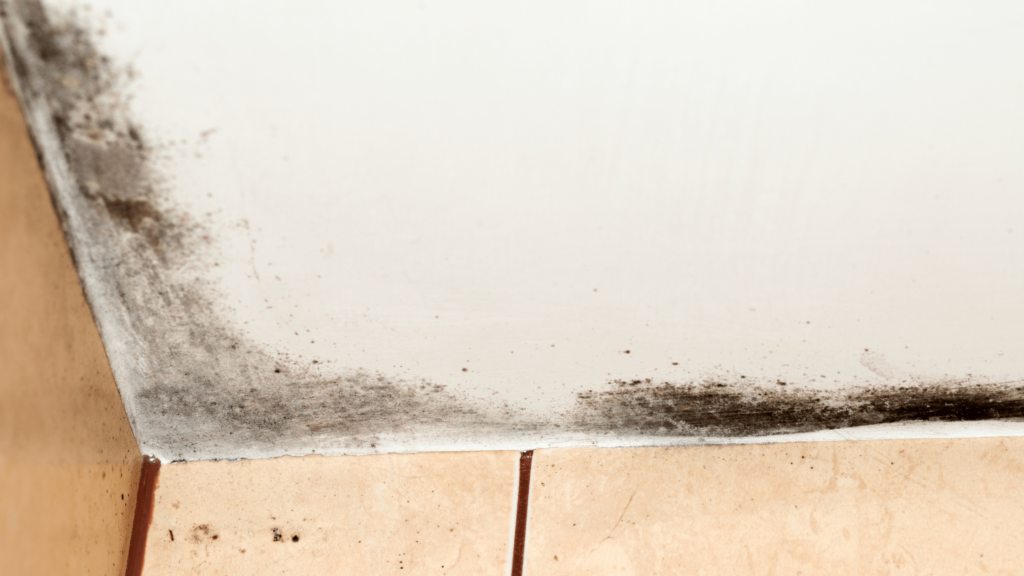
Is it normal to get mould on my doors in winter?
Yes, it’s normal to find mold on doors and windows during the winter months. Mold thrives in damp, poorly ventilated areas, which can be more common in homes during the colder, wetter season. Homes are often warmer and more sealed during colder months, creating ideal conditions for mold growth, especially near water sources where it can thrive and potentially damage structures.
To prevent mold growth, ensure good air circulation and address any moisture issues promptly. Maintaining a warm, consistent temperature helps prevent condensation, which is a common cause of mold. To deter mold effectively, avoid letting rooms become too cold and aim for a balanced indoor climate.
How do you get rid of mold in the winter?
To eliminate mold in winter, ensure proper home ventilation, use a dehumidifier to control moisture levels, fix leaks promptly, and keep surfaces clean and dry. Regularly inspect areas prone to mold growth and use mold-resistant products. Prompt action is crucial to prevent mold from taking hold during colder months.
Find out more in our detailed post on how to get rid of mould on a door.
Frozen Doors & Locks
Whilst it’s fairly rare in the UK, a severe cold snap can leave you with a frozen door or lock. Find out how to deal with door problems in freezing temperatures below:
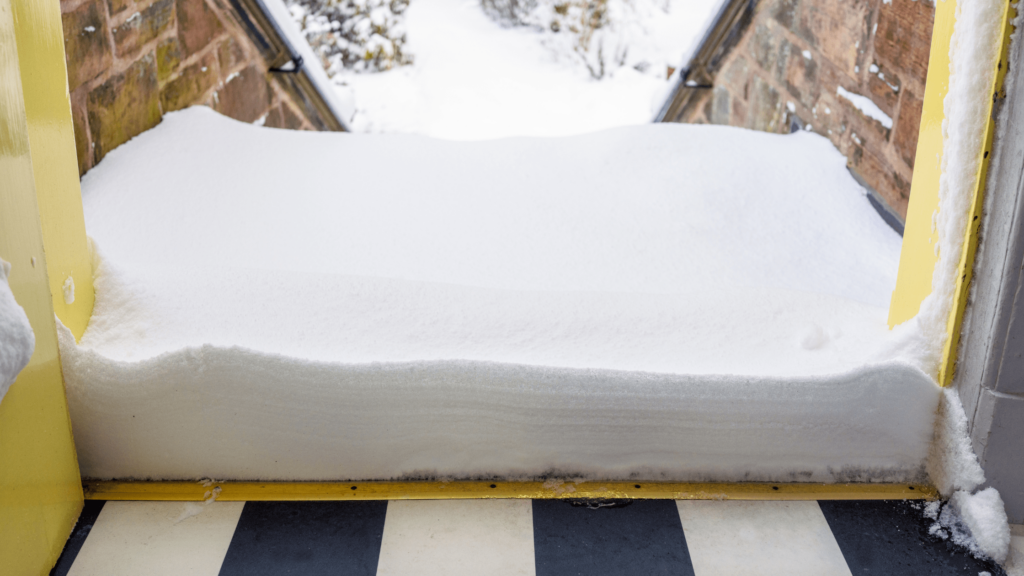
What to do if your front door is frozen
If your front door is frozen, avoid forcing it open to prevent damage. Gently use a plastic ice scraper or credit card to chip away the ice. Apply warm water in a spray bottle to melt the ice, but do not use hot water as it can crack the glass. Avoid metal tools to protect the door’s surface. For prevention, apply a silicone-based lubricant on the rubber seals.
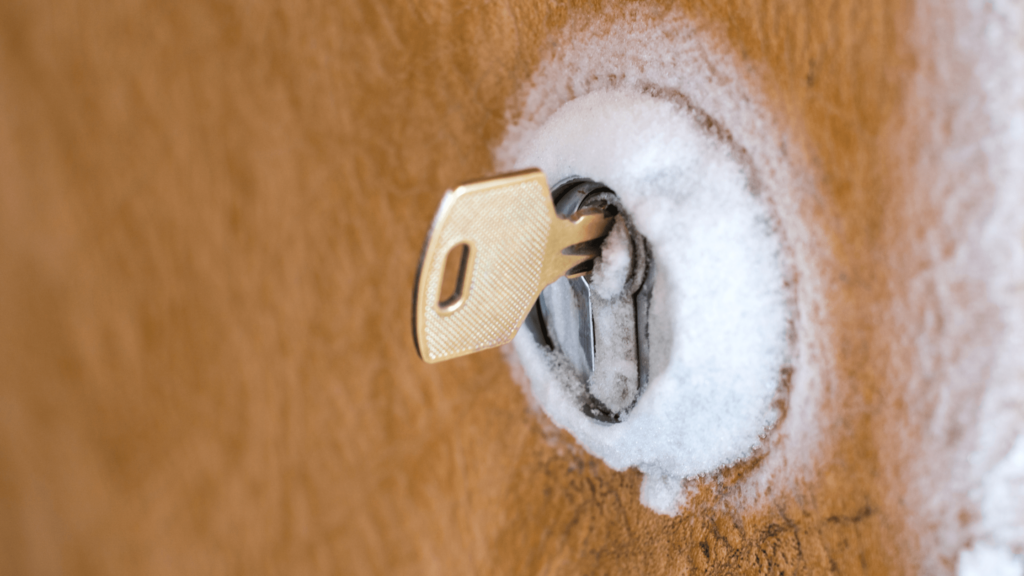
How do you unfreeze a front door lock?
To unfreeze a front door lock, apply an alcohol-based hand sanitizer to the key and insert it into the lock. The alcohol lowers the freezing point, melting the ice within. Gently wiggle the key to work the sanitizer in and thaw the lock quickly and efficiently.
For more details, take a look at our dedicated post on how to thaw a frozen lock.
Tips to Avoid Common Door Problems
Preventing problems rather than having to fix them is always a good idea. Here are our top tips:
- Tighten any loose screws to make sure everything is aligned as it should be before changing weather.
- Check for loose hinges and correct if necessary.
- Seal any areas that have lost their finish on your wood doors.
- Keep doors clean and dry.
- Check patio doors for dirt and debris in the tracks.
- Add new weatherstripping to your entry door if necessary.
- Oil moving parts and door locks to keep them operating smoothly.
So, now you know what to watch out for during the winter season and what to do if your door begins to show problems.


